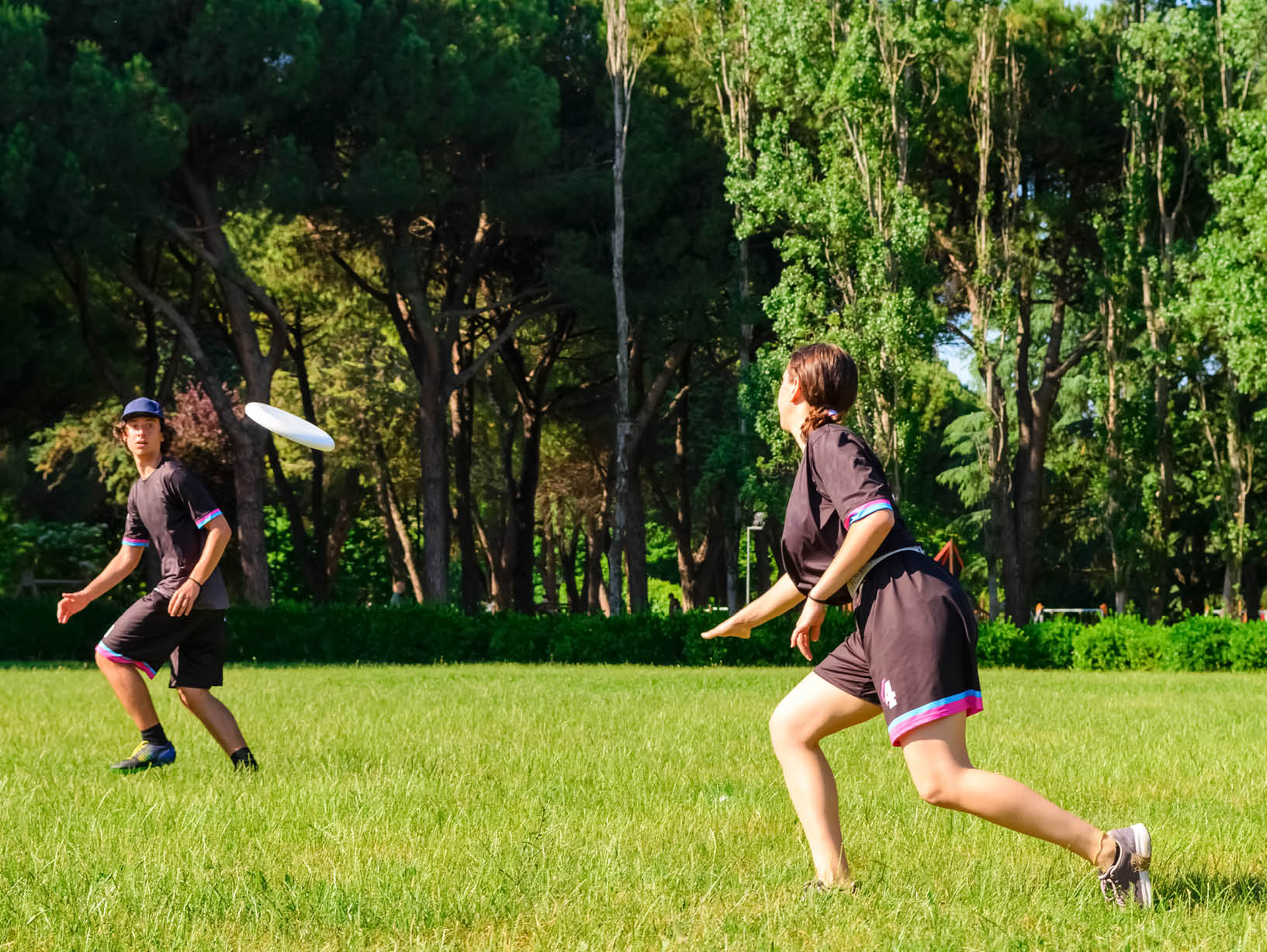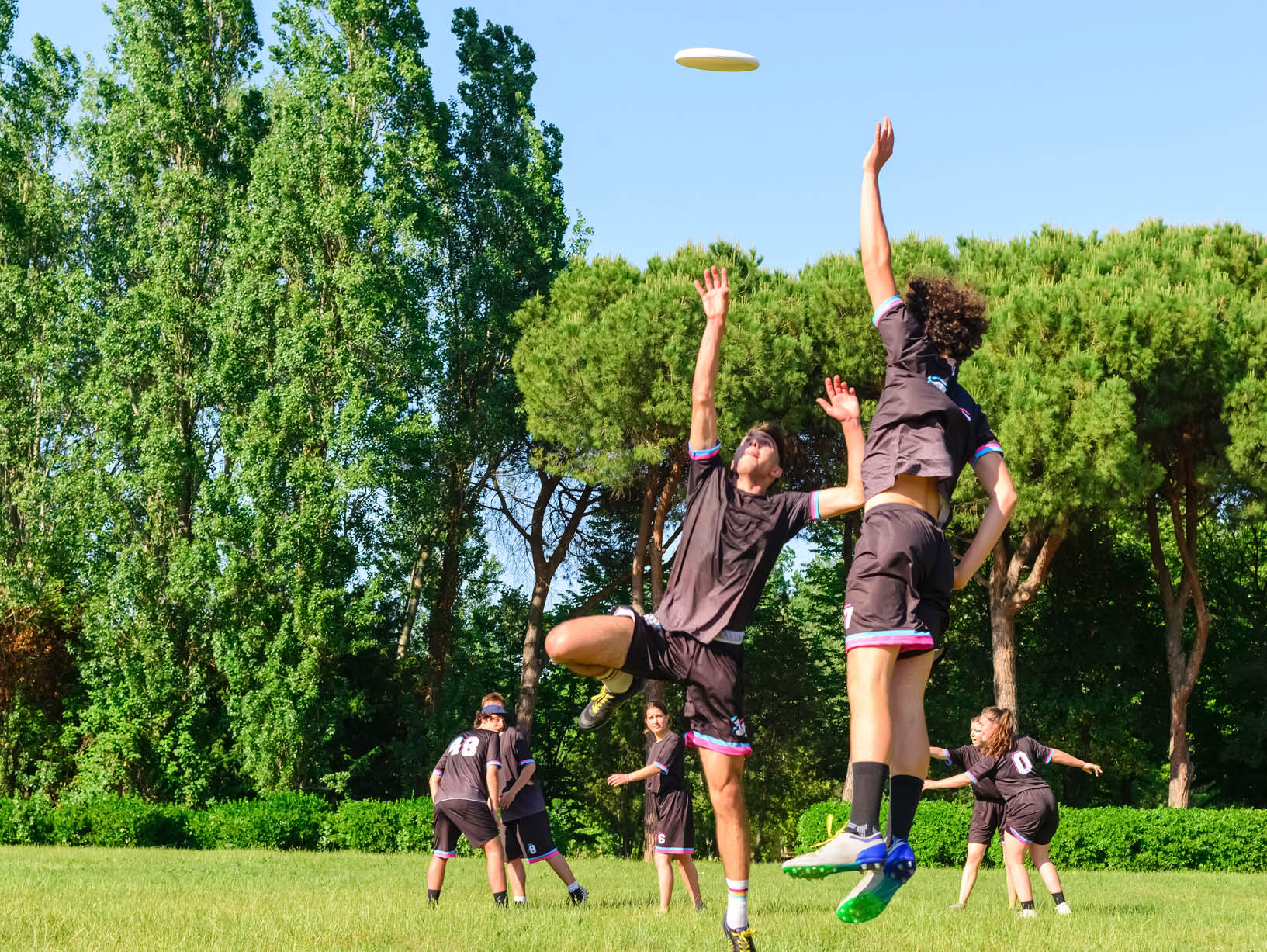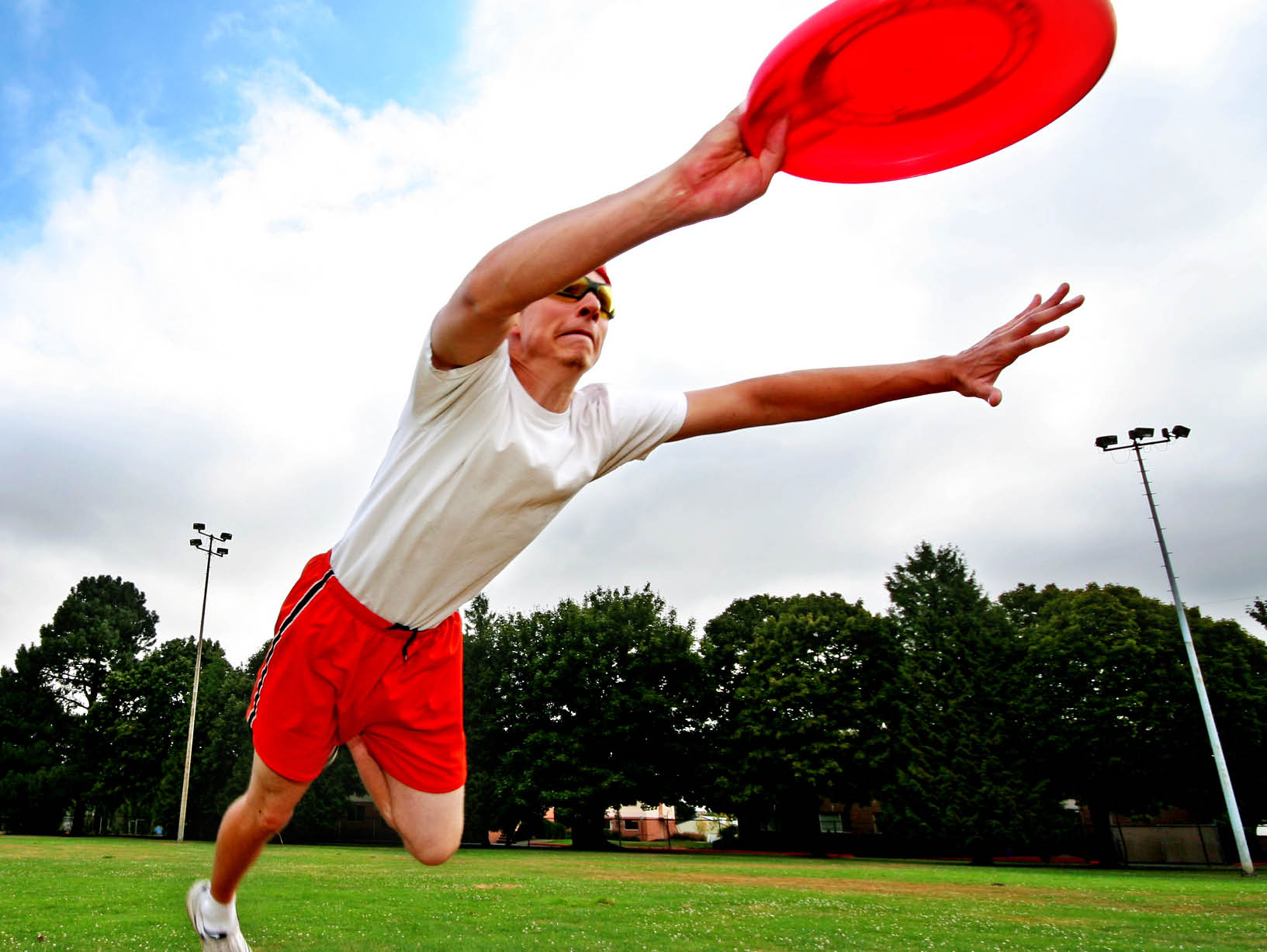The Ultimate Sport
Sometimes the simplest of sports activities, such as having a baseball catch in the backyard, playing a game of HORSE on the basketball court, or tossing a Frisbee on the beach, can be the most enjoyable.
While the first two examples are associated with longstanding professional sports, the third it tied to an unheralded sport, Ultimate (or Ultimate Frisbee, as it’s colloquially known). But that’s been changing in recent years—Ultimate has been growing in popularity from the grade-school level to the pro ranks.
With the Ultimate tournament of the 2022 World Games scheduled for mid-July in Birmingham, Alabama, it’s an ideal time to take a closer look at this spectacularly simple yet entertaining sport.

The Ultimate History
Ultimate has existed for over fifty years. Created by students at a New Jersey high school in 1968, the first formal high-school Ultimate game was played two years later. The game spread to the college ranks, and the first intercollegiate game, between Rutgers and Princeton, was held in 1972.
The sport has come a long way since then. In 1975, it went international, and by the early 1980s, it was played competitively across the globe. For over two decades, the sport has been part of the World Games, a multisport event for non-Olympic disciplines, and it’s under consideration for becoming an Olympic sport starting in 2028.
Today, there is an American Ultimate sports league, the American Ultimate Disc League (AUDL); a national governing body, USA Ultimate; and an international sports federation, the World Flying Disc Federation (WFDF). It’s estimated that there are over 100,000 Ultimate players in over fifty countries. USA Ultimate alone has over 63,000 members.
The Ultimate Workout
One of the most appealing aspects of this sport is its accessibility to all communities: all you need is a flying disc to play the game. But it’s also a good workout.
Ultimate isn’t a sedentary sport, especially on the college and pro levels. It requires stamina and athleticism—in fact, you can burn over five hundred calories an hour playing Ultimate. Beau Kittredge, the Michael Jordan/Wayne Gretzky of the sport, has reportedly run up to twenty miles over the course of a game. A 2016 study by the American Council on Exercise concluded that Ultimate falls into the category of moderate-to-vigorous activity and provides the same benefits as an interval workout. When you play the game, you’ll realize the action is nonstop and your cardio levels will be pushed.

The Ultimate Game
One reason college and pro players get a good workout is the length of the field. An Ultimate field is usually seventy yards by forty yards with a twenty-yard end zone, dimensions that are slightly smaller than an American football field but with larger end zones and a slightly narrower playing area. The difference is, unlike their football counterparts, players stay on the field for offense and defense, much like soccer players do.
The seven-on-seven game begins with the “pull,” which is like a football kickoff: one team flings the disc from its own end zone toward the opposing team waiting for it in its end zone. The receiving team then tries to advance the disc to the opponent’s end zone.
Ultimate rules are generally simple, but keep in mind that some variations exist. The team on offense can pass the disc among themselves as often as they want, as long as each player follows the rules. Namely, the player holding the disc can’t walk or run with it (but can have a pivot foot as basketball players do) and must pass it to a teammate within ten seconds or it’s a turnover called stalling. In addition, a turnover happens if the disc hits the ground, lands out of bounds, or is intercepted. On defense, double-teams and contact with an offensive player are illegal. While defending against an opponent holding the disc, a player counts to ten out loud, known as a stall count, to determine whether a stall infraction happens.
Finally, much like the best pickup games, there are no time limits. Traditionally, halftime occurs once a team reaches a certain score, usually nine, and a team wins once it reaches a score of seventeen.

The Ultimate Difference
Simply put, Ultimate doesn’t play by the same rules as most other sports. Squads are mixed-gender, for example. More striking is the fact that sportsmanship—called Spirit of the Game in Ultimate circles—is the core principle of the sport.
This starts even before the game begins, as the teams themselves determine which team gets to pull the disc first, sometimes by even playing rock-paper-scissors.
And then there are the referees … or lack thereof. That’s right—the game is usually played without officials. Instead, an honor code is used; if you commit a foul against another player, you’re expected to call it. If you do a stall count too quickly, expect a do-over. If there’s a dispute, such as whether the disc hit the ground, another player in the vicinity with a good vantage point can make the decision. Not only that, you’ll often see opponents high-fiving and congratulating each other both after a game and during a game.
Ultimate has come a long way from its humble beginnings to being an international sport featured in the World Games. In an often ultracompetitive, win-at-all-costs culture, it’s ultimately a welcome reminder of why we love sports in the first place—for the accessibility, camaraderie, spirit of fair play, and love of the game.
For more info, visit usaultimate.org









